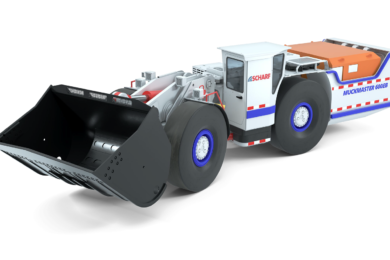In the company’s recently released annual report, Germany-headquartered rail bound mining transport and trackless electric mobile equipment major SMT Scharf gave some clues as to how it intends to grow its battery electric underground mining equipment business. Its long electrical expertise and investments such as acquiring RDH Mining Equipment in Alban, Ontario in 2018, enables it to meet market demand for electrically operated railway systems and rubber-tyred vehicles. RDH was already one of the industry’s most pioneering and succesful battery electric players, with sizeable fleets at operations including Kirkland Lake Gold’s Macassa gold mine.
SMT Scharf is advancing its battery electric strategy on several fronts. Last year, it entered into a strategic partnership with Anglo-Russian gold mining major Polymetal International in order to develop underground electric vehicles. As part of the first order worth a total of more than €4 million, it is developing and producing electric-powered LHDs as well as medium-duty underground trucks as prototypes. The vehicles that have been ordered will be deployed for underground gold mining in Russia and will be tested there as a basis for further vehicle deliveries of the same type. SMT Scharf aims to develop further electric commercial vehicles in the future. These first units are to be delivered to the company by October 2021.
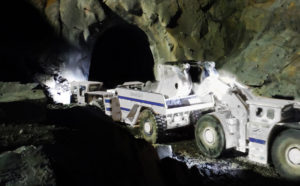
RDH, now known as SMT Scharf Canada, has entered an exclusive distribution partnership with Parts Service Supply in Mexico. The Scharf Group views the mining industry in Mexico as an excellent fit for the group’s rubber-tyred product line of machines due to the region’s mining methods, and remote nature of mines. Founded on the principle of simplifying heavy equipment, the Scharf Group says it is committed to providing quality equipment that is both safe and simple to operate and service. The current product portfolio offers a fleet solution from utility vehicles, load and haul machines, through to drilling. SMT Scharf has a narrow-vein equipment line that has become a popular choice amongst Scharf’s current Mexican customers and the option of customisation is frequently taken advantage of by those seeking machines specifically tailored to their mining operations for maximum efficiency. In the future there is battery electric potential there too.
Moving to Chile, an electric Liftmaster 600EB scissor lift is successfully operating at Codelco’s El Teniente copper mine along with an SMT Scharf E-Cruiser light electric vehicle (LEV), part of a joint project with Engie. The LEV manages a range of 150 km and requires a charging time of two hours. It is also characterised by a high safety standard. The battery cells are cooled by a special coolant so that each individual cell is always kept at the optimum operating temperature. The advantage for the mine operator is that electric vehicles require significantly less maintenance than vehicles with combustion engines, thereby contributing to cost savings in the long term, even if diesel vehicles are initially cheaper to purchase.
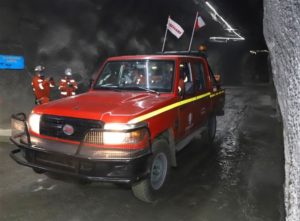
And in South Africa, SMT Scharf has opened of a new manufacturing facility located in Johannesburg. In conjunction with the SMT Scharf Canada subsidiary in Alban, Ontario, both entities will build both new and remanufactured underground mining equipment for customers around the world, including battery electric. The company said in May 2021 that in the future, electrically powered vehicles will also be manufactured or reconditioned there for mining customers from all over the world. “The new manufacturing facility in South Africa will help us to further develop our electrical expertise within the Group, and meet demand for underground electric vehicles.” With the establishment of the new facility, SMT Scharf doubled its output capabilities and has further demonstrated its commitment to the African mining sector. This new facility adds nearly 3,000 m² of manufacturing space including six bays for rubber-tyred mobile equipment. The location will also serve as the regional manufacturing and support centre for SMT Scharf’s monorail and chairlift products.
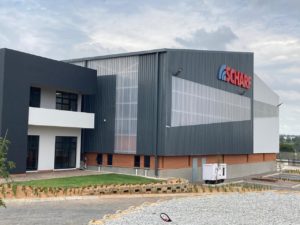
Wolfgang Embert, COO stated: “Speaking of sustainability, as a specialist engineering company we contribute to better working conditions in mining raw materials underground with our innovations and customised transport solutions. In mining, the reduction of pollutants and associated improvement of working conditions underground is becoming increasingly important. Many companies are now looking intensively at using electric vehicles in underground mining. These vehicles significantly reduce the impact of heat, particulate matter, noise, and pollutants such as NOx and CO2. Electric vehicles are locally emission-free. This reduces the need for fresh air, in other words, the costly supply of fresh air and cooling underground, in the long term. This is of particular interest where additional cooling of fresh air is necessary due to large depths. This is the case in South Africa’s gold and platinum mines, for example.”
He adds: “In principle, we have proven battery and electrical expertise within the company and we can meet demand for electrically powered drive systems. One advantage of our modular product concept is that we can act flexibly and are able to equip and develop the vehicles individually according to customer requirements. In order to be able to meet the demand for electric vehicles that is anticipated, we have made considerable efforts in order to provide personnel with the necessary qualifications, as well create the requisite production facilities.”
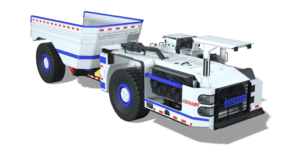
But the company is also under no illusions that there is still work to be done to convert underground mining to electric on a large scale. CEO, Hans Joachim Theiss comments: “Electric vehicles require significantly less maintenance than vehicles with combustion engines, and thereby contribute to cost savings long-term. Electric vehicles offer one disadvantage: they are much more expensive to buy than diesel vehicles, so mine operators give careful consideration to converting to vehicles with electric drive systems. Although the maintenance effort for electric vehicles is significantly reduced compared to conventional drive systems, electromobility poses significant challenges for the operators’ day-to-day business in terms of infrastructure and employee qualifications.”







